Contents
Communicating With Customers Using the Storybrand Framework
Did you know that 90% of new startups fail, with 34% closing within their first year?
There are numerous reasons for this, from poor cash flow to a lack of organization. However, one costly and often overlooked reason is ineffective marketing that fails to resonate with customers. Even if you have a great product or service and an obvious opportunity, you can still waste money on customers who aren’t interested.
So, how do you address this issue? By utilizing the StoryBrand Framework.
What is the StoryBrand Framework?
The StoryBrand Framework consists of 7 core principles that help you clarify your message and understand your customers’ perspective.
In many ways, it is a refined version of your initial business development process. It involves defining opportunities, identifying the problem you solve, and converting it into an actionable plan. The main difference is that the final steps focus on transforming these core concepts into customer-oriented messaging.
Why should you use the StoryBrand Framework?
Clarity and information overload cannot coexist. As Donald Miller, CEO of StoryBrand, states, "When you confuse, you lose." While you may have a talented team, great resources, and an outstanding product, without a clear message, you won’t attract customers.
Customers already face countless decisions. If they struggle to understand why they should choose your brand, they will simply move on. In reality, most people don’t buy the best products; they buy the ones they understand the most. This is where the StoryBrand Framework comes in – it helps you simplify your brand messaging and optimize your communications.
Applying the StoryBrand Framework to your business
Now, let’s dive into how you can apply the StoryBrand Framework to your business. To make the most of this guide, download and print the StoryBrand Brandscript template here or use the free digital sheet at Mystorybrand.com. Read through each of the 7 principles below and complete the corresponding action item on your worksheet.
1. Define your customer’s wants
The first principle is to understand what your customer wants and clearly define the problem your company solves best.
For example, consider a typical digital marketing agency:
"Innovation and collaboration to achieve the incredible."
This statement is vague and meaningless.
A better way to communicate:
"We build custom websites that grow your business."
In this scenario, the customer may not comprehend the meaning of innovation and collaboration to achieve the incredible, but they will understand the value of a business that helps grow their own.
Your company should be known for providing something that aligns with what customers want. This needs to be clearly defined so you can ignite their desire and invite them into a narrative that explains why they need your product or service.
Now it’s your turn: What does your customer want in relation to what you offer?
Example:
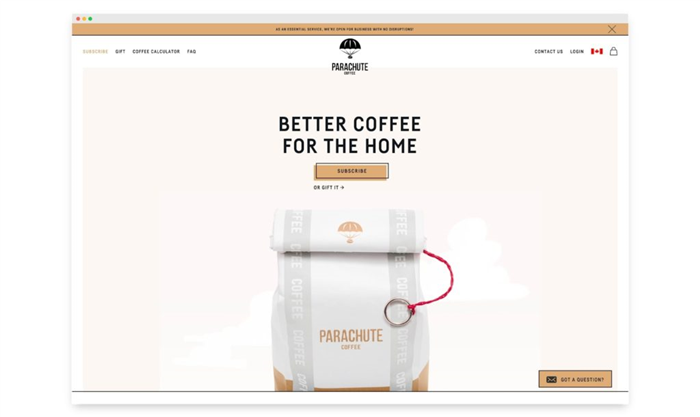
Why it works: a coffee subscription for great tasting coffee at home.
2. Identify customers’ problems:
A story without a problem is not a story.
To keep customers engaged, it’s crucial to clearly address the problems they face.
For this reason, you need to discuss your customers’ problems. Here are some examples:
– Is your marketing effective?
– Are you wasting money on ineffective Facebook ads?
– Do you struggle to communicate your offerings?
– Have you spent a lot on a new website without generating sales?
– Your competitors rank higher on Google.
Your turn: What obstacles prevent your customers from getting what they want?
Example:
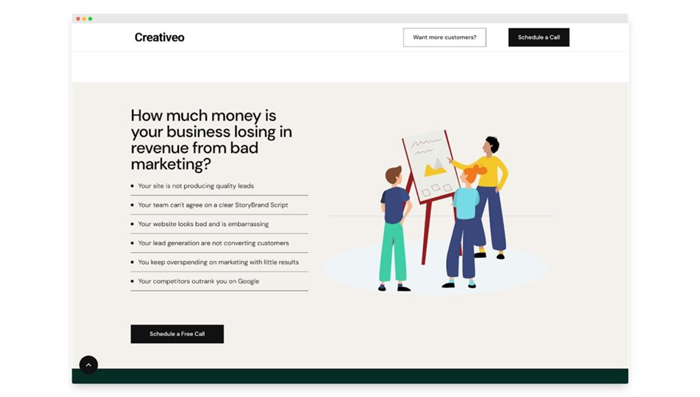
Why this works: The problem highlights the negative impact of bad marketing on business growth.
3. Be the help they seek
Now that you have hooked your customer by addressing their problem, they might be feeling hopeless.
Your brand should play the role of the guide, not the hero.
How do you do this?
First, establish empathy by acknowledging the problem and frustration your customer is facing.
Your turn: Finish this sentence "We understand what it feels like to [customer’s problem]."
Part two is establishing authority as a guide. Use social proof, like testimonials.
Great brands understand that not every testimonial is equal. Ask these questions to get valuable testimonials:
– What challenges did you face before using our service/product?
– How did this problem make you feel?
– What changed after using our products/services?
– What specific results did you experience?
Example:
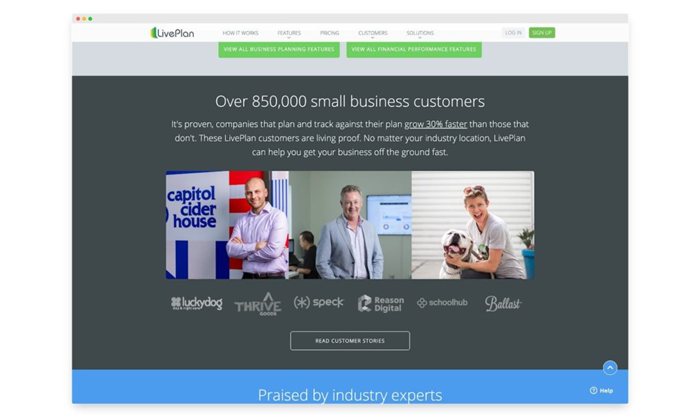
Why this works: Authority is established through social proof of over 850,000 small business owners, including logos of successful businesses.
4. Develop an easy, well laid-out plan
The 4th principle is an easy to understand plan for your customers.
What steps does your customer need to take to overcome their conflict and experience success? You don’t need to make this complicated but simply show in 3 to 4 steps—the steps your customer has to take to experience success using your services.
Your turn: Create your process plan in three steps.
Example:
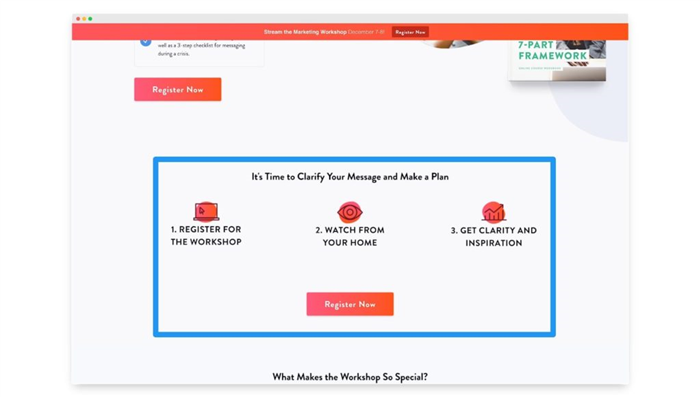
Why this works: Clear steps on how to register for the workshop and get clarity with your messaging.
5. Call to action
A call to action is often overlooked but is essential for a clear website. It’s where you communicate to customers that you want to do business with them.
A prominent call to action can make a difference in customer conversion. For instance, "Buy Now", "Schedule a Call", or "Get Started" (note: "Learn more" is not an inviting call to action).
Your turn: Evaluate your website. Do you have a simple, obvious invitation for customers to do business with you?
Example:
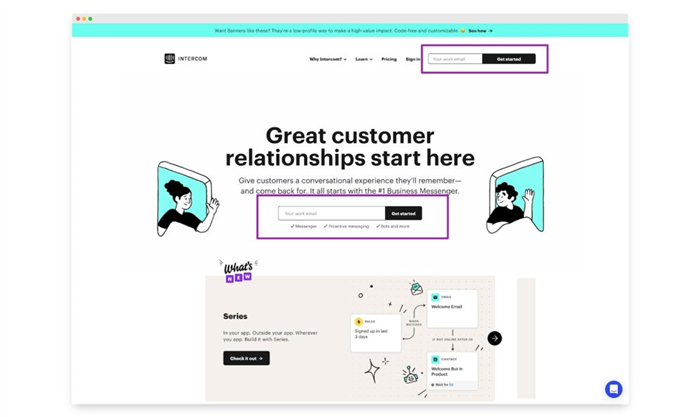
Why this works: Active language propels you to use the product. It feels simple and clear.
6. Identify and explain the stakes
If your customer doesn’t engage, what are the consequences?
This Storybrand Framework principle emphasizes the need to explain to customers what may happen if the problem isn’t addressed. You have a responsibility to highlight the stakes.
Your turn: One way to address failure is to ask questions that prompt customers to realize what they’re missing or how they’re feeling. For example:
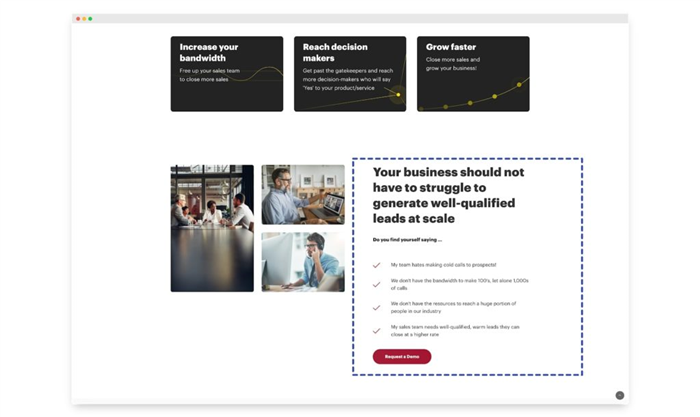
Why this works: A empathetic statement coupled with the frustration that sales managers tend to experience with their sales process.
7. Envision success
What does your customer’s life look like after engaging with your brand?
You have agitated the problem, now you need to help them imagine success. The customer wants to know what their life can look like if they use your products or services.
You can help them visualize this in two ways:
1. Through your web copy: See our Basecamp example of before and after scenarios.
2. Images on your site: Smiley, happy people enjoying your products or services.
Example:
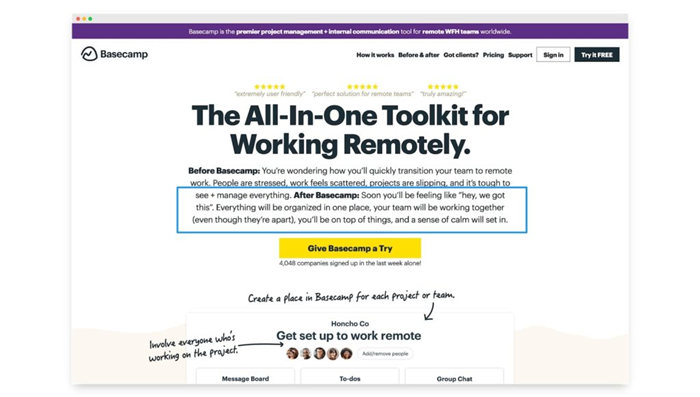
Why this works: A tool like Basecamp is ideal for solving problems. However, it is essential to understand what success looks like. Great copy of before and after.
Final thoughts:
Building and sustaining a successful startup is a challenging endeavor. However, businesses that clarify their message can attract more customers and achieve growth.
The Storybrand Framework is a powerful tool to bring clarity to your messaging, ensuring that your target audience listens and takes action. Dive into the framework and start telling your brand story today.
Hello!
I’m Andrew Brooks, a seasoned finance consultant from the USA and the mind behind phonenumber247.com.
My career is built on a foundation of helping individuals and businesses thrive financially in an ever-changing economic landscape. At phonenumber247.com, my aim is to demystify the complex world of finance, providing clear, actionable advice that can help you navigate your financial journey with confidence. Whether it’s personal finance management, investment strategies, or understanding the nuances of market dynamics, I’m here to share insights and tools that can propel you towards your financial goals.
Welcome to my digital space, where every piece of advice is a step closer to financial clarity and success!
